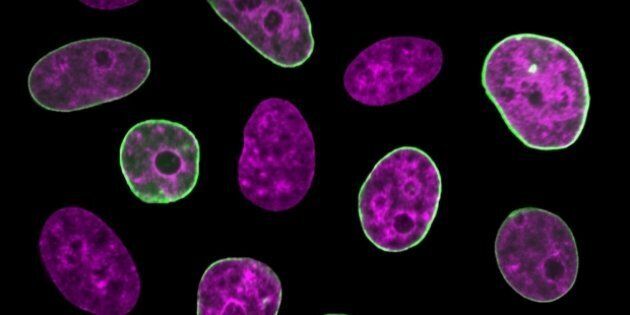
A group of NYU researchers have discovered human cells have an "internal clock" that can indicate when they will die.
Scientists are hoping the discovery can further human understanding of diseases including cancer.
"Previously, a precise point of a cell in its life cycle could only be determined by studying dead cells," Alexandra Zidovska, a lead researcher, said in a press release Monday.
"However, with this discovery, which shows that the nucleus exhibits rapid fluctuations that decrease during the life cycle of the cell, we can enhance our knowledge of both healthy and diseased human cells."
Scientists already knew the size of a cell's nucleus depends on what stage it was in during its life cycle. What they weren't sure was how rapidly its shape could change in short periods of time.

Researchers used high-tech fluorescent microscopes to pinpoint tiny, rapid changes in living cell nuclei. They noticed living cells have nuclear envelopes with a tendency to flicker over the course of a few seconds.
These flickers had been noted in the past, but were caused by temperature changes. Researchers noticed how the flickers are the first physical feature to change during a cell's cycle: the older a cell was, the weaker these flickers appeared.
"Therefore, this process can serve as an internal clock of the cell, telling you at what stage in the cell cycle the cell is," Zidovska explained.
Since errors in the nuclear envelope can contribute to the development of many disorders including cardiomyopathy and cancer, studying the nuclear flickers in the cell cycle might guide scientists toward new technologies and medicine to treat these diseases.
The study appears in the journal "Proceedings of the National Academy of Sciences.
Also on HuffPost: